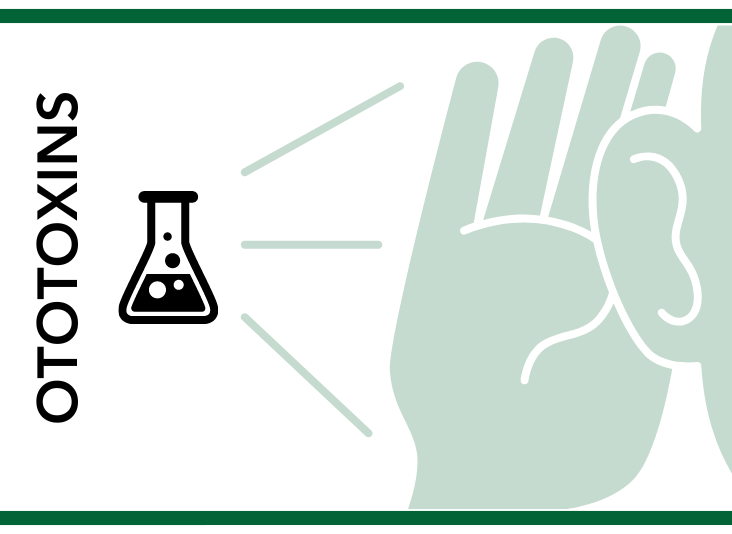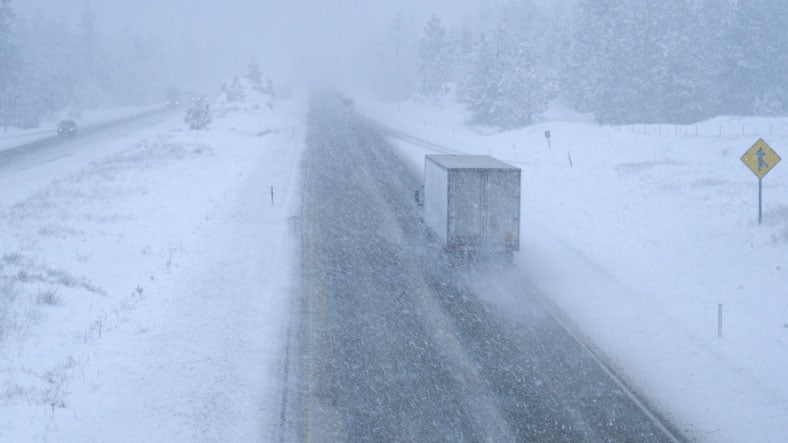Hearing Loss Due to Ototoxic Exposures
Excessive noise exposure has long been known to cause hearing loss. Noise exposure risks run across all industries, and according to the National Institute for Occupational Safety and Health (NIOSH), more than 22 million workers are exposed to on-the-job hazardous noise annually.
Recently, however a newer class of chemicals—ototoxic chemicals—have also been known to cause hearing loss, even in the absence of noise exposure. It’s vital to know the risks—as well as how to combat them—to protect total worker health and well-being as well as to foster safe worksites.
This was the thesis of my presentation at the Alliance of Hazardous Materials Professionals (AHMP) EHS HAZMAT Summit, where I covered such key points as:
1. Both noise and ototoxic chemicals can cause hearing loss when improperly managed and monitored.
Noise exposure causes damage to the tiny hair cells within the ear’s cochlea that transmit noise signals to the brain. When exposed to noise, the tiny hair cells in this part of the ear flatten out. With short exposures, the hairs raise back up—but long, frequently repeated, or extremely loud exposures reduce hair cell recovery, reducing hearing ability overall. There’s no such thing as being “used to the noise”—workers who say this are actually experiencing hearing loss and potentially permanent damage.
Ototoxic chemicals cause similar physical damage and hearing loss, but via different routes of exposure. These substances are classified based on what part of the ear they damage:
- Neurotoxins damage the nerve fibers that deal with hearing and balance functions in the ear.
- Cochleotoxicants effect cochlear hair cells, the sensory receptors that noise also impacts, and can impair hearing ability.
- Vestibulotoxicants interact with the hair cells on the organs that control spatial orientation and balance.
Common ototoxins include:
- Jet/diesel fuels
- Carbon monoxide
- Mercury
- Lead compounds
Some medicines are ototoxic as well. Temporary damage can occur from:
- Non-steroidal anti-inflammatory drugs (NSAIDs) like:
- Asprin
- Ibuprofen
- Naproxen
- Antimalarial quinine
- Loop diuretics, as are used to treat hypertension and edema
Permanent damage can occur from certain:
- Antibiotics, like aminoglycosides. This includes streptomycin and neomycin.
- Anticancer drugs. Cisplatin in particular is known to cause severe permanent hearing loss.
All chemical exposure routes can cause hearing damage. Symptoms of ototoxic chemical exposure include:
- Mild to severe hearing loss in one or both ears
- Tinnitus
- Loss of balance and dizziness
Ototoxic chemical exposures can result in the development of speech discrimination dysfunction, a condition that prevents one from distinguishing voices from background noise. This may involve:
- Compressed loudness or sound distortion
- Frequency resolution, the inability to differentiate two sounds of similar frequency
- Temporal resolution, failure to detect time intervals between sounds
- Spatial resolution, incapacity to detect where a sound is coming from
Suffering from exposure means that sounds need to be louder to be perceived—and clarity is lost within these sounds. These are caused by ototoxic chemicals’ effect on the central portions of the nervous system, such as the:
- Nerves or nuclei in the central nervous system (CNS)
- Pathways to the brain
- Brain itself
2. Combined noise and ototoxic chemical exposures can cause additive and synergistic hearing loss.
Chemical exposure can cause both temporary or permanent damage to various parts of the ear. Pairing this damage with noise exposure, can cause additive and/or synergistic ear damage. The same NIOSH report from above found that co-exposure to ototoxic chemicals and loud noises results in an increased likelihood of hearing impairment versus exposure to loud noises alone.
In the same way as 2+2+2+2=8, work noise, home noise, work chemical exposure, and home chemical exposure can quickly add up to impact hearing.
While the exact synergistic effects are still undefined for ototoxic chemicals, almost every case study showed evidence of additive hearing loss impacts. Some case studies even state that employees exposed to both noise and ototoxic chemical exposure had much more significant threshold shifts than either alone: i.e. 2+2+2+2=20.
3. Hearing loss from ototoxic chemical exposures has a drastic impact on total worker health and decreases workplace safety.
Once exposures occur, a downward spiral of negative effects will follow:
- Chemical and medication exposures can cause adverse effects on hearing thresholds.
- Effects are either temporary or permanent.
- Hearing loss occurs in workers who do not participate in hearing conservation programs.
- Chemically-induced hearing loss can skew audiograms for workers who do participate in hearing conservation programs.
- Workplace controls could be misdirected, or focused on the wrong hazards.
This downward spiral, and hearing loss in general, ultimately harms total worker health and work capacity. Hearing difficulties at work can cause unsafe conditions for workers as they lead to:
- Inter-worker communication difficulties
- Poor sleep cycles
- Mental health issues
- Damage to future job acceptance and performance opportunities in the organization
- Increased difficulty working in noisy environments, reducing operational performance
- Increased risk of workplace injuries, as employees can’t hear coworkers, environmental sounds, or warning signs
4. Workplace ototoxic chemicals should be identified, and relevant exposure limits should be incorporated into a hearing conservation program, as available.
This will help ensure all hearing risk control systems focus on the correct sources of danger.
Currently, there are no universally-defined exposure limits established by the Occupational Safety and Health Administration (OSHA), NIOSH, the American Conference of Governmental Industrial Hygienists (ACGIH), or other federal agencies or industry organizations.
The lowest observed effect level (LOEAL) and no observed effect level (NOEAL) have only been identified in animals for a few substances. The ACGIH has, however, included a notation about ototoxic chemicals in their threshold limit values (TLVs) and biological exposure indices (BEIs) since 2019.
Exposure guidelines are expected in the future, however:
- Since 2018, NIOSH has been studying the effects of ototoxic chemical exposures, but we likely won’t see this guidance for another couple of years.
- The ACGIH is starting to include ototoxicity notations with chemicals.
- Many journal case studies are already recommending exposure limits be reduced by 50% or more from current limits.
- Exposure guidance could be a future factor of noise exposures or simply new hard limits regardless of noise exposures.
All of this means that ototoxicant-induced hearing loss may go unrecognized since the measure for hearing loss does not indicate the cause. For complete data driven responses, managers will have to wait until there are documented thresholds for noise/chemical exposures, both in combination and individually.
Luckily, there are some controls that can help keep employees and workplaces safe:
- Identification of all workplace ototoxic chemicals, which will in turn enable:
- Replacement of all ototoxic chemicals with less dangerous substances, if possible
- Increased engineering controls
- Changes to or elimination of tasks that cause both noise and ototoxicant exposures
- Evaluation of the potential for workplace noise and chemical exposures over days and weeks—not just the typical 8-hour workday. At-home exposures should also be considered, as damage can be cumulative.
- Mandatory enrollment of all ototoxicant-exposed workers (>20% TLV) in a hearing conservation program. Some substances can still cause damage even well below OSHA’s Permissible Exposure Limits (PELs), so all workers who are potentially exposed should be included in this program. This may include awareness training about the hazards of ototoxic chemical exposures, and how to prevent them.
- Use the lowest (or even lower) exposure levels, usually from the ACGIH, for workplace allowances and to evaluate ototoxicant exposure. 20-50% of the ACGIH’s TLVs are recommended.
- Deploy personal protective equipment (PPE) wherever possible.
- Incorporation of airborne exposure monitoring in any workplace hearing conservation plan (HCP). HCPs should be implemented even in the absence of noise exposures and should include any employees who are exposed to ototoxic chemicals.
Allow us to help you keep your employees safe from ototoxic chemicals—contact us today to learn more.







